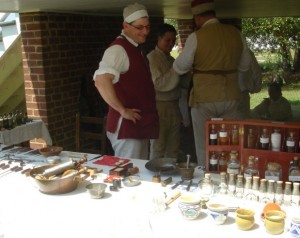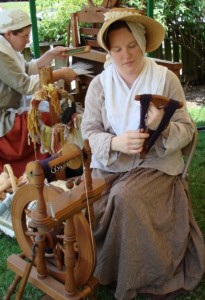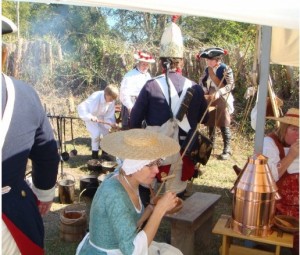From the Vault Note: This essay first appeared in a slightly different form on Southern Writers Magazine’s blog, April 2013.
Readers often comment that my stories immerse them fully in the fictional world I’ve created. Achieving that “You Are Here” feeling is a challenge for most authors. Those who write historical fiction wish they had a time machine, a way to experience what the past was like.
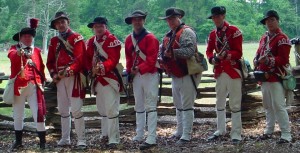 I write crime fiction set during the eighteenth century, in the American War of Independence. I’ve found that time machine.
I write crime fiction set during the eighteenth century, in the American War of Independence. I’ve found that time machine.
.
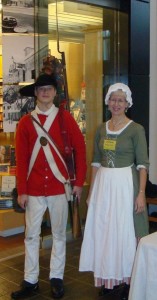 When I started researching this period almost twenty years ago, I quickly realized that if I intended to create believable fiction about people who’d lived more than two hundred years earlier, reading books on the topic and interviewing subject matter experts wouldn’t cut it at helping me capture the period flavor. A desire to experience the everyday challenges my characters would have faced and how their world smelled, tasted, and sounded fueled my interest in becoming a Revolutionary War reenactor.
When I started researching this period almost twenty years ago, I quickly realized that if I intended to create believable fiction about people who’d lived more than two hundred years earlier, reading books on the topic and interviewing subject matter experts wouldn’t cut it at helping me capture the period flavor. A desire to experience the everyday challenges my characters would have faced and how their world smelled, tasted, and sounded fueled my interest in becoming a Revolutionary War reenactor.
.
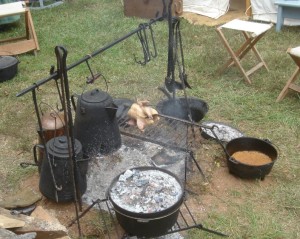 My sons and I spent many weekends camped at historical battlegrounds during reenactment events. We slept in white canvas army tents with no mosquito screens, and we dressed in clothing made of wool and linen. Our menu was limited by what meals we could prepare over a wood fire. Food occasionally got scorched. Most of the time, running water, flush toilets, and heat or air-conditioning were unavailable.
My sons and I spent many weekends camped at historical battlegrounds during reenactment events. We slept in white canvas army tents with no mosquito screens, and we dressed in clothing made of wool and linen. Our menu was limited by what meals we could prepare over a wood fire. Food occasionally got scorched. Most of the time, running water, flush toilets, and heat or air-conditioning were unavailable.
I learned to start a fire from flint and steel. Not until I’d done so did I comprehend the impact of natural variables, such as wind and humidity, on establishing a fire when you don’t even have the convenience of matches. Try starting a fire with flint and steel on a windy, wintry night.
 I also learned to load and fire a musket with powder only, like reenactors on the battlefield. Nothing I’d read prepared me for the noise, weight, heat, or reload time of the musket. The one time I fired a ball, I saw the way it could have ricocheted off trees and killed someone. How often did that happen in woodland skirmishes hundreds of years ago?
I also learned to load and fire a musket with powder only, like reenactors on the battlefield. Nothing I’d read prepared me for the noise, weight, heat, or reload time of the musket. The one time I fired a ball, I saw the way it could have ricocheted off trees and killed someone. How often did that happen in woodland skirmishes hundreds of years ago?
And I learned to move in a petticoat. However no reference book prepared me for how quickly the wind whipped my petticoat into the campfire at one event. Did you know that being burned was one of the top causes of death for women in the eighteenth century?
I’m a woman of the twenty-first century. I take technology for granted. Convenience and accessibility underpin my culture and shape my values and reactions. But during the Revolutionary War, very little was convenient or accessible. Danger and scarcity shaped decisions, especially for the middle and lower classes.
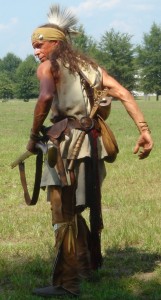 We’re out of touch with the hardships our ancestors endured to stay alive. My challenge is to bridge that gap in my fiction. The lessons I’ve learned from reenacting inform the crafting of my fictional world. Without the experience of having lived history via the time machine of reenacting, I wouldn’t be able to provide such a believable and captivating escape for readers.
We’re out of touch with the hardships our ancestors endured to stay alive. My challenge is to bridge that gap in my fiction. The lessons I’ve learned from reenacting inform the crafting of my fictional world. Without the experience of having lived history via the time machine of reenacting, I wouldn’t be able to provide such a believable and captivating escape for readers.
**********
Did you like what you read? Learn about downloads, discounts, and special offers from Relevant History authors and Suzanne Adair. Subscribe to Suzanne’s free newsletter.

